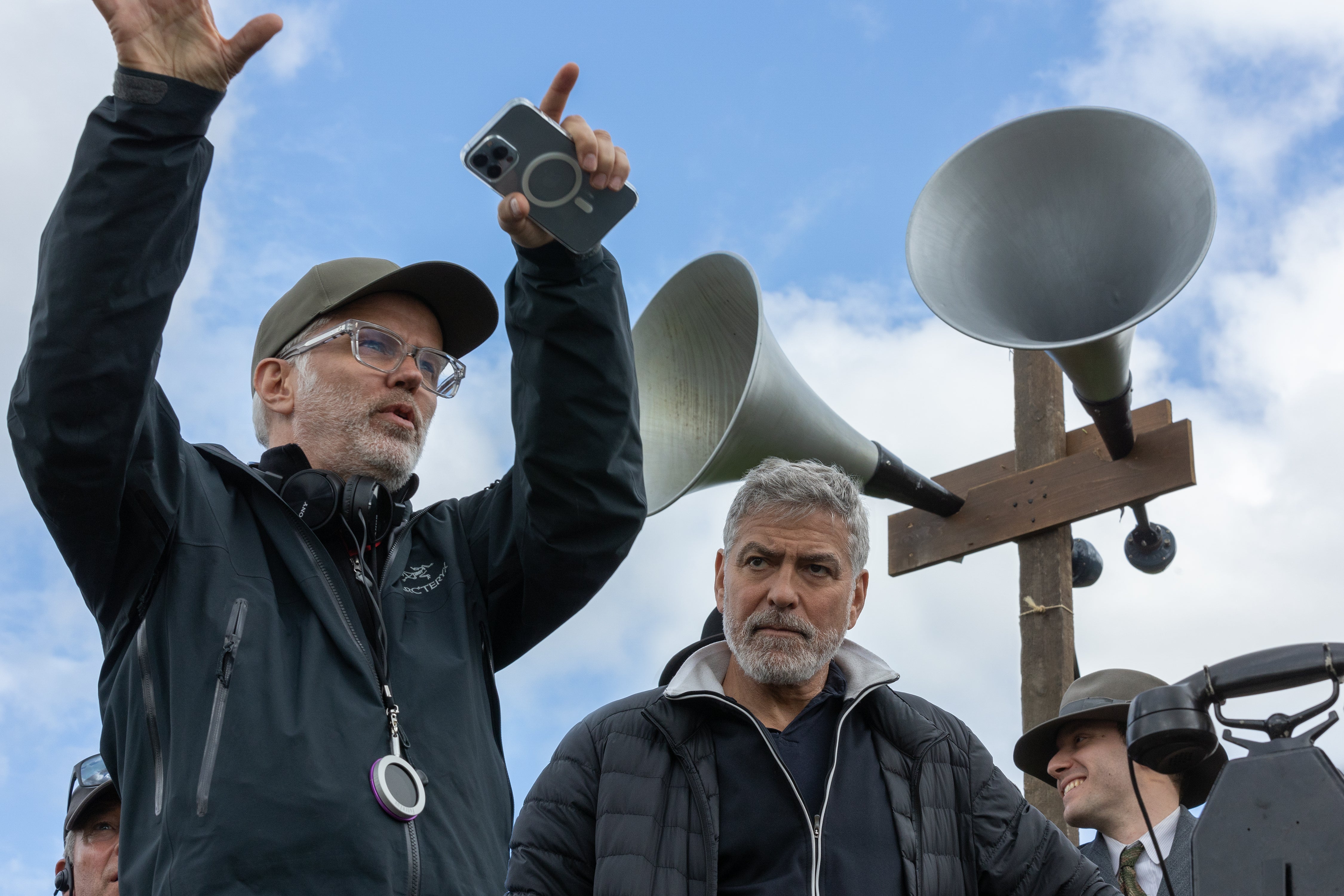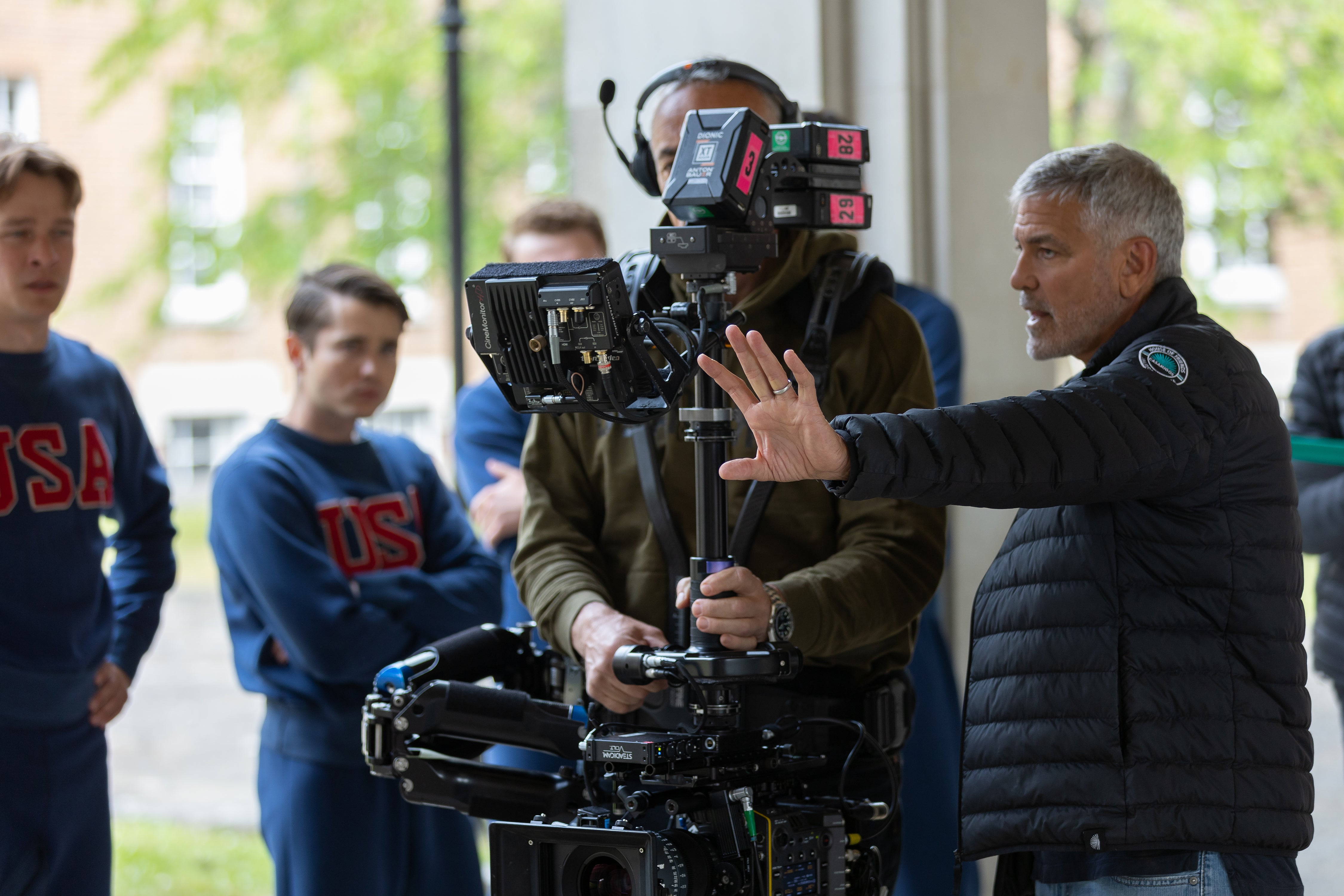
12-27-2023 - Case Study
Director George Clooney and DP Martin Ruhe ASC bring best-selling novel ‘The Boys in the Boat’ to the big screen
By: Victoria Graham
Based on the best-selling novel by Daniel James Brown, The Boys in the Boat brings a classic underdog story about a young rowing team to life. The story takes place during the height of The Great Depression where the protagonists fight for a position on the University of Washington rowing team as a means to survive and find a better life. Against all odds, they find themselves at the 1936 Olympic Games, competing against Nazi Germany.
Developing the look of 'The Boys in the Boat'
Clooney and Ruhe have collaborated many times over the years on projects like The Midnight Sky (2020) and The Tender Bar (2021). The two filmmakers have a great working relationship, so when Clooney asked Ruhe to shoot his latest project, he didn’t hesitate to accept. Shot on location in England, The Boys in the Boat would have a unique look of its own to capture the historical era.
“When we create Seattle in the Great Depression era, we have limited sets and limited worlds we can create. You want to give the impression that the whole world was suffering - and these boys were - the reason the main hero starts to row is because his parents left him behind and he's on his own.”
To create the look of the film, Ruhe likes to come into a film without any preconceived looks but instead approach the look organically. He explains, “When you start a project with an open mind, you discover things that lead you to other things and you can form something new. I like it when it surprises me and takes me somewhere I didn't think of before. This inspiration can come from locations and conversations had with the director or production designer.”
In terms of film references, Ruhe looked at photographs from that time, but color photography was practically non-existent in that era. To reimagine this look, he worked with Stefan Sonnenfeld, Senior Colorist at Company 3. Sonnenfeld, who has worked on hits including Top Gun: Maverick, Maestro, and The White Lotus series, sent some options for LUTs based on sample references and, through a series of camera tests, they found a LUT that was right for daylight scenes. “That's what we took on board and that's how our dailies looked. The dailies are not so far from what we ended up with in the film. And then we like the texture of them, and I don't like it to look too digital, but that's why we have added a bit of film grain later. We wanted to be a modern version, but yet not a digital version of that historic story.”
Shooting on the water created a host of challenges for this project. The film featured dozens of Olympic rowers, along with actors who were not Olympic rowers. Some scenes would need to capture up to 72 rowers in a single race. Ruhe recalls, “It's logistically demanding because you have to get everybody in the boat, you have to get cameras ready, you have might have to wait for the rain to pass. But once we started shooting on the water, we went for it. And we couldn't be too fancy about having everything perfectly lit. We just had to plow through and make it dramatic.”

Why Ruhe opted to use the Sony VENICE
Like Director of Photography Greig Fraser, Ruhe opts to choose the camera based on the need of the production. In this case, Ruhe knew that working on the water would be challenging and remarkably, he knew at once that he would use the Sony VENICE. The VENICE’s built-in glass ND filters would allow Ruhe to embrace daylight and changes in natural light. “I used Venice cameras because I wanted to have the versatility on the water to change ND filters quickly with 4 or 5 cameras operating at once. I knew once we go onto the water, we want to work as fast as possible, as flexible as possible.”
And part of that flexibility meant using the Sony Rialto system, which was important in rigging difficult shots on the boats. Ruhe explains, “The whole boat work was challenging because these boats are pretty fragile. They're very narrow. They tip off balance very easily. I couldn’t be in the boat with a handheld camera in front of them, I take too much space.”
And in addition to the boats being fragile, the race itself proved to be an exciting challenge in terms of how to film it. Ruhe explains, “The rowing is basically, the movement is pretty stoic. There's not the dynamic of a curve which you have on bike races or car races or something. So they go in a straight line. They move a lot. You can film it from other boats, but your reach is, those oars keep you at distance. That's tough.”
To solve the challenge of space, the production designed a special boat that would allow Ruhe to be seated and shoot handheld while the actors were on the water. In total, the production had up to three camera boats, including a small catamaran that could be used without creating a wake.
Ruhe paired the VENICE with large format anamorphic lenses to create a beautiful fall off to the edges. “The ARRI ALFA lenses are the only ones I know of, which are two times anamorphic on large format, giving you a shallow depth of field and render the skin really nice.”

The Boys in the Boat: In theaters now
The Boys in the Boat opened in theaters on Christmas Day with acclaim from viewers and critics alike. Roger Ebert noted, “When people say ‘they don’t make movies like that anymore,’ this is the kind of movie they’re talking about.” Watch The Boys in the Boat now in theaters everywhere.




